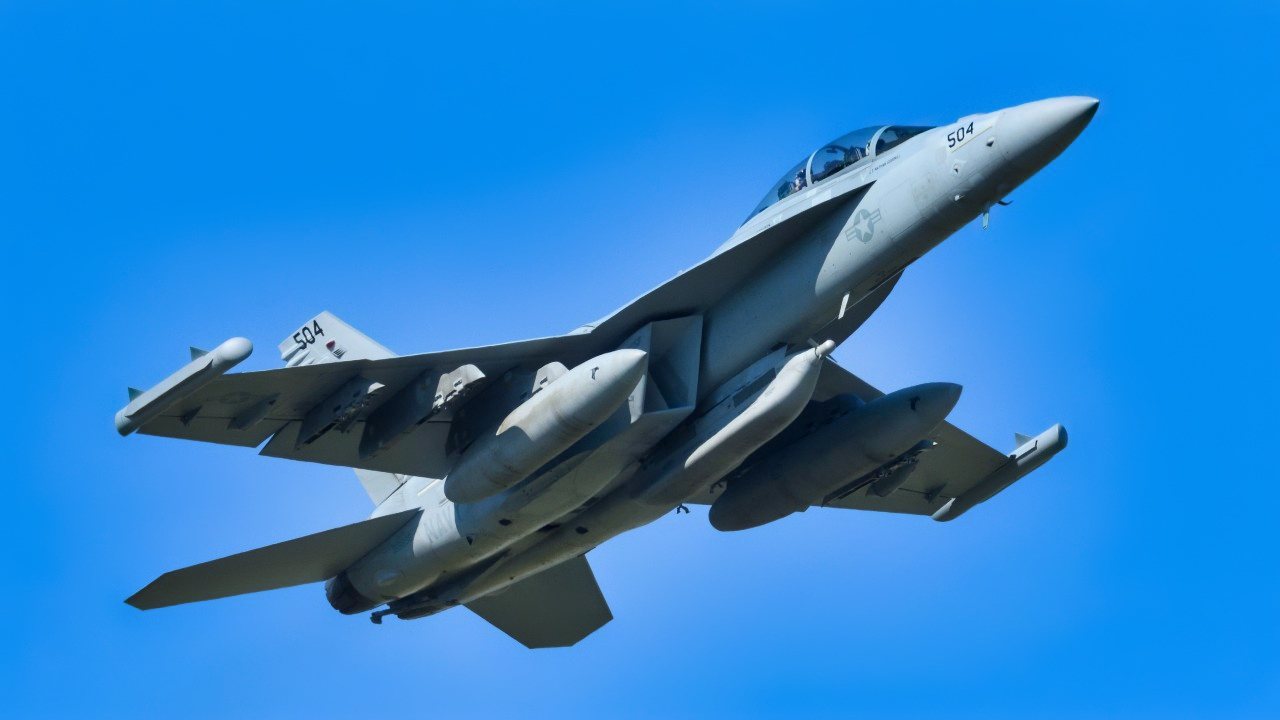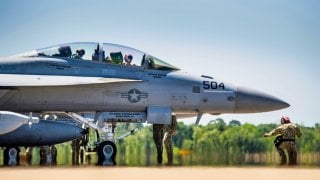Forget the F-35: The Navy's E/A-18G Growler Is a Flying Masterpiece
The E/A-18G Growler, derived from the F/A-18 Super Hornet, is the U.S. Navy's premier electronic warfare aircraft.
Summary and Key Points You Need to Know: The E/A-18G Growler, derived from the F/A-18 Super Hornet, is the U.S. Navy's premier electronic warfare aircraft. Equipped with advanced systems like the AN/ALQ-218(V) Receiver and the AN/ALQ-99 Tactical Jamming System, the Growler can detect, disrupt, and suppress enemy radar, communications, and missile guidance systems.
-In addition to its electronic warfare capabilities, it retains the combat prowess of the F/A-18, able to carry air-to-air and air-to-ground munitions.
-While costly to operate, the Growler has proven its worth in modern conflicts, creating electronic corridors for U.S. forces in high-threat environments like Libya and Syria.
E/A-18G Growler: The U.S. Navy’s Electronic Warfare Powerhouse
America’s military has taken the F/A-18E/F Super Hornet airframe to its limit. This workhorse warbird operates as an air superiority fighter, but it often serves the Navy as an interceptor for aircraft carrier battle groups.
But the Super Hornet can do more still. Its E/A-18G Growler variant is a master of the dark arts of electronic warfare (EW). This bird’s primary role is to neutralize and suppress enemy electronic systems for the Navy.
In so doing, the Growler provides an essential edge for the U.S. military in modern warfare where electronic dominance is just as decisive in combat as physical destruction.
Meeting a Need
The Navy recognized the need for an aircraft that could survive in an electronically saturated environment and also disrupt critical electronic signals. The F/A-18F Super Hornet, with its reliable twin-engine configuration and advanced avionics, gave Pentagon designers the vital platform.
Before the Navy began purchasing the E/A-18G Growler, they relied upon the old EA-6B Prowler. But this system could not handle the demands of the rapidly changing, electronically charged battlefield.
America’s E/A-18G Growler is a mean beast. She comes equipped with a vast array of sophisticated EW systems, such as the AN/ALQ-218(V) Receiver, allowing the plane to detect, locate, and assess enemy radar signals. This capability means that the Growler can identify and prioritize targets.
Relatedly, the Growler has the AN/ALQ-99 Tactical Jamming System (TJS). In essence, the TJS jams enemy radar systems, communications, and even missile guidance. The “electronic noise” generated by the Growler dazzles and blinds an enemy, giving tactical leverage to the Growler and its allied elements in combat.
As an important aside, the Navy upgraded to the Advanced Tactical Jamming Suite, which augments the TJS. The concept remains the same, only better. Growlers come equipped with what’s known as an ICMD (Internal Countermeasures Dispensing System) that, as its name suggests, rapidly deploys chaff and flares to disrupt incoming enemy radar-guided and heat-seeking missiles popped off at the Growler.
To ensure that the Growler can communicate effectively and securely as well as to navigate safely in electronically degraded environments, the Growler possesses the Communication/Navigation Identification suite.
What’s more, the E/A-18G has all the incredible combat capabilities of the F/A-18F, including air-to-air and air-to-ground munitions. This makes the Growler perhaps the most versatile warplane in the U.S. Navy and Marine Corps’ arsenals.
The History of the Growler
The Growler has fundamentally changed the capabilities of the U.S. military in modern combat. It can operate in high-threat environments while simultaneously degrading enemy air defenses and their electronic capabilities, giving the Navy real air superiority.
Growlers have operated in the U.S. military’s operations in Libya and Syria. These birds created electronic corridors other warplanes could follow, enhancing the survivability and combat effectiveness of the overall force against the Russian-built air defenses U.S. forces faced in these operations.
Sadly, these birds don’t come cheap.
The underlying technologies, along with riskier mission sets, make the Growler an expensive plane to operate. And despite the technological sophistication and success rate of these birds on the modern battlefield, these birds are increasingly in danger of becoming obsolete. More than at any other time in the last 50 years, America’s rivals are developing technological capabilities to counter sophisticated platforms such as the E/A-18G Growler.

America’s rivals are adapting to the Growler and possibly coming up with technologies to defeat the plane in combat.
Keeping the E/A-18G Growler Relevant
Discussions persist about how to best modernize these planes. One question is how best to integrate these platforms with artificial intelligence and unmanned aerial vehicles.
As the Navy explores developing the Next Generation Jammer, one question is whether to upgrade the Growler to integrate these new systems, or whether an entirely new platform should be created.
Personally, I would argue in favor of upgrading the Growlers. The U.S. defense industrial base will not be able to provide for the Navy’s demands in a new platform, so it’s best to simply enhance what the Navy already has.
Regardless of what happens with the Growler in the future, this bird is a testament to the importance of EW and has given America’s military a real fighting edge over its adversaries for years.
Author Experience and Expertise: Brandon J. Weichert
Brandon J. Weichert, a National Interest national security analyst, is a former Congressional staffer and geopolitical analyst who is a contributor at The Washington Times, the Asia Times, and The-Pipeline. He is the author of Winning Space: How America Remains a Superpower, Biohacked: China’s Race to Control Life, and The Shadow War: Iran’s Quest for Supremacy. His next book, A Disaster of Our Own Making: How the West Lost Ukraine, is due October 22 from Encounter Books. Weichert can be followed via Twitter @WeTheBrandon.
All images are Creative Commons or Shutterstock.
From the Vault
Russia Freaked Out: Why the U.S. Navy 'Unretired' the Iowa-Class Battleships
Battleship vs. Battlecruiser: Iowa-Class vs. Russia's Kirov-Class (Who Wins?)


